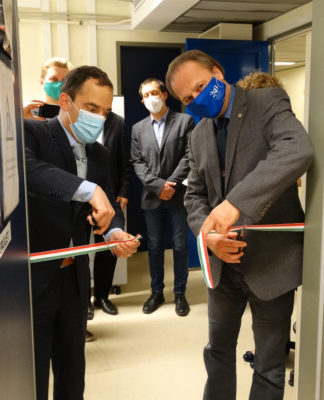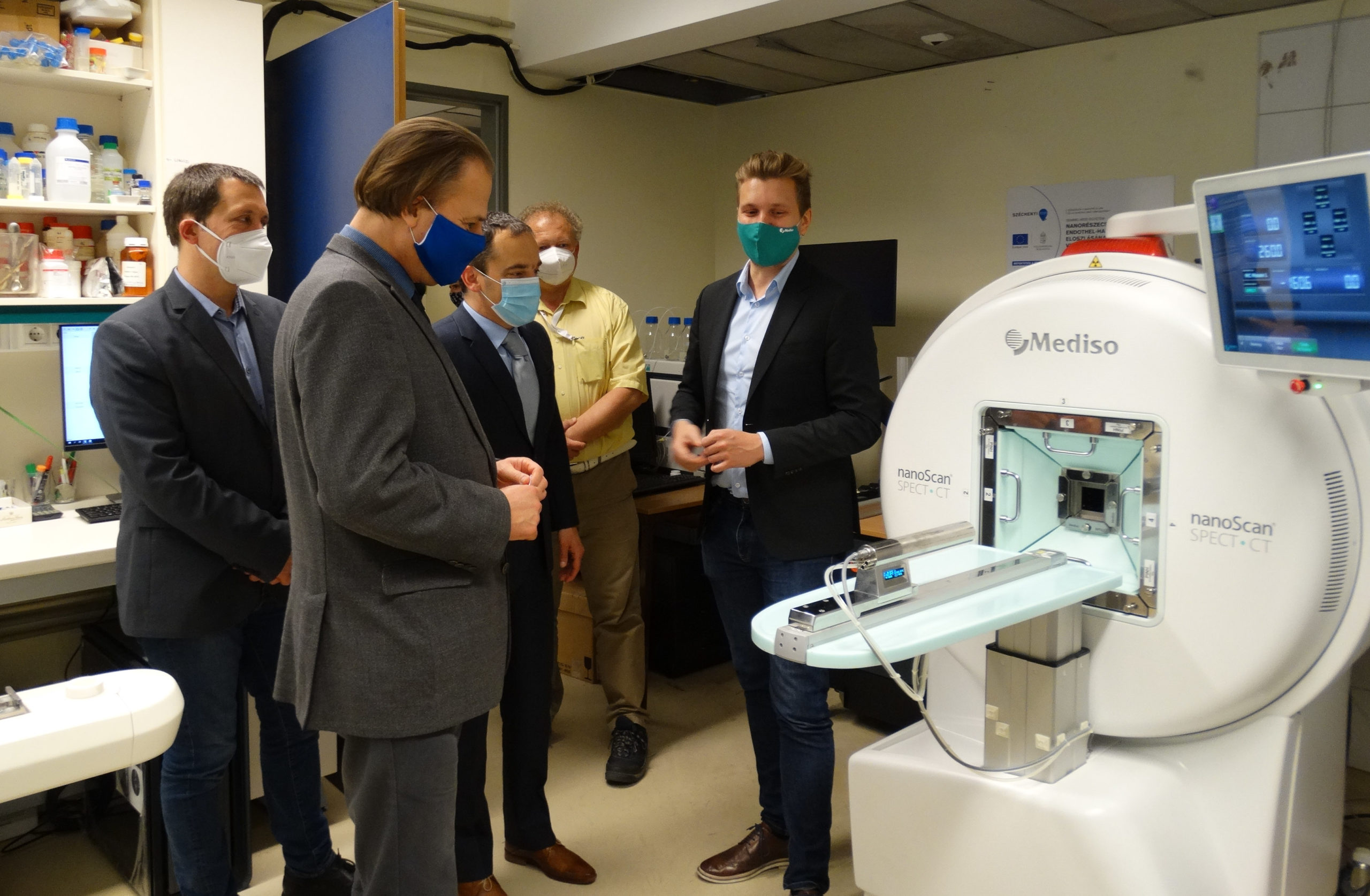A new NanoScan SPECT-CT device has recently been installed at Semmelweis University. The institution won a grant of 295 million HUF, and procured a photoacustic ultrasound system, an isotopic NanoScan SPECT-CT and accessories. After the device is put into operation, research may start with the participation of the Department of Biophysics and Radiation Biology, the Institute of Translational Medicine, the Department of Pharmaceutics and the Nanomedicine Research and Education Center. Collaboration serves to make patient-centric drug delivery more effective.
 “With the help of the new research infrastructure offered by the NanoScan SPECT-CT device combined with a photoacustic system, drug substance research with the approach of systems biology (properties of the systemic functioning of molecules, cells, tissues and the body) may be established at the university and may open up new ways for the development of therapeutic drug carriers”, said Dr. Zoltán Benyó, director of the Institute of Translational Medicine, project leader at the handover ceremony of the device.
“With the help of the new research infrastructure offered by the NanoScan SPECT-CT device combined with a photoacustic system, drug substance research with the approach of systems biology (properties of the systemic functioning of molecules, cells, tissues and the body) may be established at the university and may open up new ways for the development of therapeutic drug carriers”, said Dr. Zoltán Benyó, director of the Institute of Translational Medicine, project leader at the handover ceremony of the device.
The acquisition of the device is another milestone in the implementation of Semmelweis University’s institutional development plan, which has the long-term goal of further developing imaging procedures, especially those that enable measurements in living organisms, tissues and cells.
Nanotechnology is gaining ground in various forms in modern societies. Investigating its effects on health plays a particularly important role in our daily lives, as the effects of various nanoparticles entering the human body, or that of other living beings is not well known.
It is now also a vital issue for the pharmaceutical industry to be able to determine pharmacokinetic-pharmacodynamic (PK/PD) relationships in the most efficient way using drug development techniques.
In order to reach this, the widespread use of nanomedicine is essential, which also contributes to more effective drug delivery.
Today, patient-centric drug delivery has become a common approach in drug development. The composition, technological structure, applicability and the controlled release of the active substance of the drug dosage form must be designed to ensure efficacy and tolerability, as well as to meet the specific needs of the patient. In the case of state-of-the-art drug delivery systems, such as drug delivery nanosystems, it is essential to take the principle of patient-centeredness into consideration in addition to the quality, safety and efficacy of the product.
“The recently installed NanoScan SPECT-CT device is extremely important, since in a project ranging from basic research to clinical trials, the direction of research is determined by using state-of-the-art technology, based on long-term social impacts”, Dr. Zoltán Benyó pointed out.
Source and photo: Institute of Translational Medicine
Translation: Katalin Illés-Romhányi



